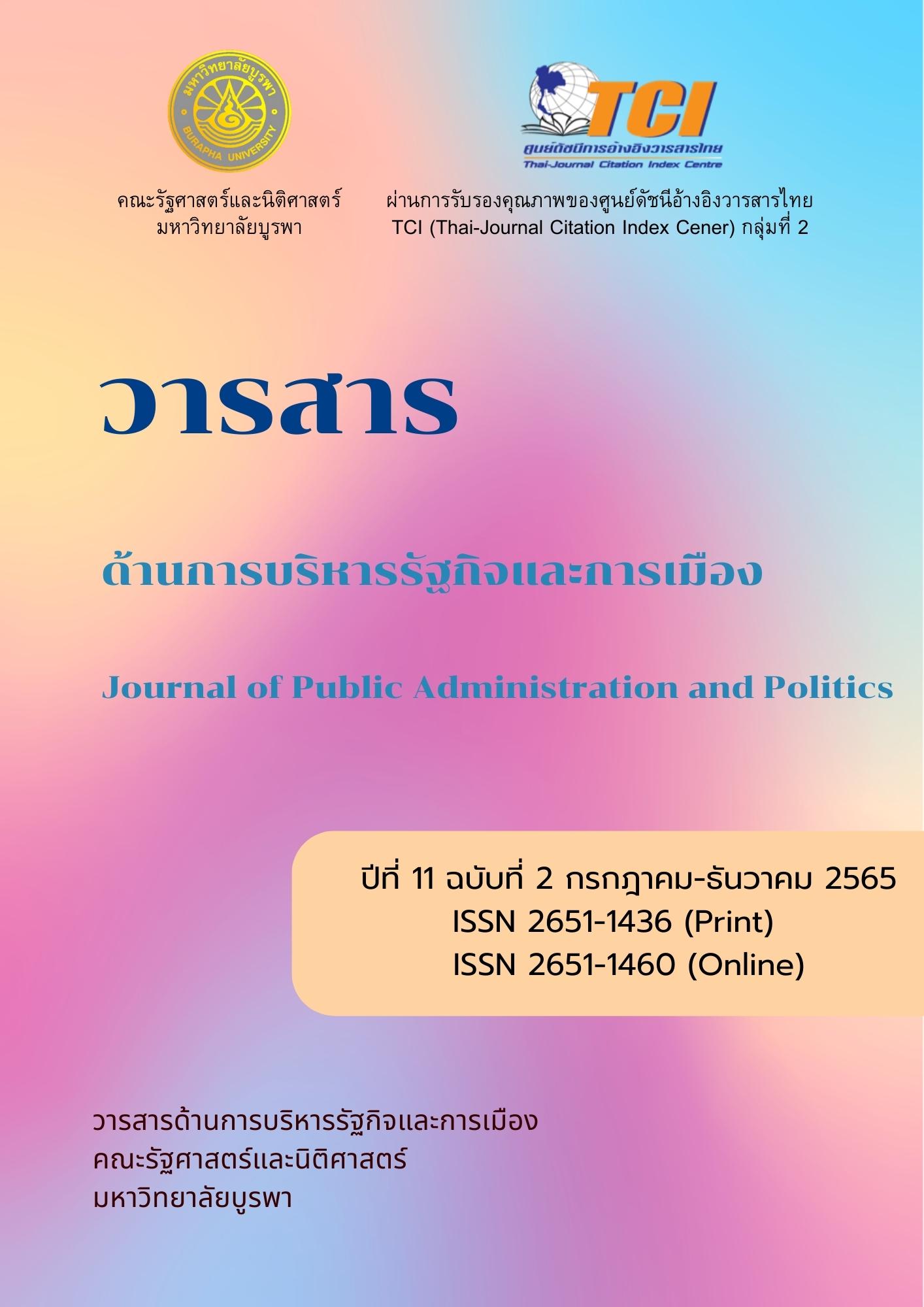การพัฒนาศักยภาพผู้สูงวัยผ่านหลักสูตรการเรียนรู้สู่การสร้างคุณค่าเพื่อสร้างสื่อปลอดภัยและสร้างสรรค์ในโรงเรียนผู้สูงอายุ จังหวัดกาฬสินธุ์
Main Article Content
บทคัดย่อ
This research Using quantitative research 1) study the potential of elderly using a training course to develop the potential of older people 2) compared the achievements of the elderly before and after using the training course to develop the potential of the elderly and 3) study the satisfaction of the elderly towards the training course to develop the potential of the elderly. the population is 5 seniors in Kalasin Senior School, 25 each, including 125 people, the sample is 5 seniors in Kalasin Senior School, 6 each, totaling 30 people simple random sampling method, respectively. A tool used to collect data as a query. Statistics used to analyze data include percentage, average, standard deviation, and paired samples test t-test to compare before-after training.
The findings were as follows:
- 1. The results of the competency scores of the elderly before and after training using the training course to develop the potential of the elderly .found that after training using the training course to develop the potential of the elderly .Seniors averaged higher scores than before training, with an average of 13 potential scores (=77.97, S.D.=7.48) and an average of 52.47 pre-training potential scores (=52.47, S.D.=10.47).
- 2. Achievement of the competence of the elderly after using the training .It was found that after training using the training course to develop the potential of the elderly, higher than before training. Statistically significant at .01 level.
- The satisfaction of the elderly towards the training course. It was found that overall and listings had the highest average level (= 4.58, S.D. = .55).
Keywords: Potential Development. Elderly, Value Creatio
Article Details
เอกสารอ้างอิง
กาญจนา เชี่ยววิทย์การ และทศพล คุ้มสุพรรณ. (2557). ความต้องการทางการสื่อสารของผู้รับสารกลุ่ม
ดิจิตอล เนทีฟ. วารสารบริหารธุรกิจ เศรษฐศาสตร์และการสื่อสาร. ปีที่ 10 ฉบับที่ 1. (หน้า 112).
กระทรวงสาธารณสุข. (2557). ยุทธศาสตร์ ตัวชี้วัด และแนวทางจัดเก็บข้อมูล กระทรวงสาธารณสุข
กรุงเทพมหานคร .
ฤตินันท์ นันทธิโร. (2543). บทบาทของผู้ดูแลในการดูแลผู้สูงอายุในชุมชนเขตเทศบาลเมืองสุรินทร์.
วิทยานิพนธ์ปริญญาศิลปศาสตรมหาบัณฑิต. บัณฑิตวิทยาลัย : มหาวิทยาลัยขอนแก่น.
พเยาว์ พงษ์ศักดิ์ชาติ, ชุติมา มาลัย และคณะ. (2562). การส่งเสริมพฤติกรรมสุขภาพตามภูมิปัญญา
ท้องถิ่น. วารสารพยาบาลทหารบก, ปีที่ 20 ฉบับที่ 3 กันยายน-ธันวาคม .(หน้า 44-53)
มูลนิธิสถาบันวิจัยและพัฒนาผู้สูงอายุ (2561). สถานการณ์การสูงวัยของประชากรไทย. สืบคนเมื่อ 25
มกราคม 2565, จาก http://thaigri.org./?p36746.
ยงยุทธ์ บุราสิทธิ์ และขวัญจิต ศศิวงศาโรจน์. (2561). การส่งเสริมค่านิยมไทย “คุณค่าและศักดิ์ศรี”
ของผู้สูงอายุในสังคมเมือง. วารสารภาษาและวัฒนธรรม. ปีที่ 37 ฉบับที่ 2 กรกฎาคม-
ธันวาคม . (หน้า 129).
รศรินทร์ เกรย์ และคณะ. (2556). มโนทัศน์ใหม่ของนิยามผู้สูงอายุ : มุมมองเชิงจิตวิทยาสังคมและ
สุขภาพ. นครปฐม : บริษัทโรงพิมพ์เดือนตุลา จำกัด.
วิทยากร เชียงกูร. (2552). จิตวิทยาในการสร้างความสุข. (พิมพ์ครั้งที่ 2). กรุงเทพฯ: สายธาร.
สมศักดิ์ ศรีสันติสุข. (2539). สังคมวิทยาภาวะสูงอายุ: ความเป็นจริงและการคาดการณ์ในสังคมไทย.
กรุงเทพฯ : สำนักพิมพ์จุฬาลงกรณ์มหาวิทยาลัย.
สำนักงานกองทุนพัฒนาสื่อปลอดภัยและสร้างสรรค์. (2561) . รายงานประจำปีกองทุนพัฒนาสื่อ
ปลอดภัยและสร้างสรรค์. กรุงเทพมหานคร : สำนักงานกองทุนพัฒนาสื่อปลอดภัยและ
สร้างสรรค์.
Blumer, Herbert. (1969) “The Methodological Position in Symbolic Interaction,”
Herbert Blumer Symbolic Interaction.
Coopersmith. S. (1981). The antecedents of self-esteem. (2nd ed). Palo Alto, CA:
Consulting Psy chologists press.
Livingstone, Bober & Helper. (2005). Internet Literacy among Children and Young
People: Finding from the UK Children Go Online project. LSE Research
Online. Available at: http://eprints.lse.ac.uk/397/1/UKCGOonlineLiteracy.pdf
Rogers, C.R. (1951). Client Center Therapy. Boston: Houghton Mifflin.


